Reproduction
Reproduction is the biological process by which new individual organisms are produced from their parent organisms. It is a fundamental characteristic of all living beings and is essential for the continuation of a species.
Types of Reproduction
There are two main types of reproduction:
- Asexual Reproduction: This type of reproduction involves a single parent and does not involve the fusion of gametes. The offspring produced are genetically identical to the parent.
- Sexual Reproduction: In this type of reproduction, two parents contribute genetic material to produce offspring. The offspring are genetically different from the parents due to the combination of genetic material from both parents.
Importance of Reproduction
Reproduction is crucial for the survival and continuation of a species. It allows for genetic diversity, adaptation to changing environments, and the perpetuation of desirable traits within a population.
Study Guide
Here are some key points to remember when studying the topic of reproduction:
- Define reproduction and explain its significance in the natural world.
- Differentiate between asexual and sexual reproduction, providing examples of each.
- Discuss the advantages and disadvantages of both types of reproduction.
- Explain the role of DNA and genetic material in the process of reproduction.
- Describe the life cycle of a typical organism, highlighting the reproductive stages.
Understanding the process of reproduction is essential for comprehending the mechanisms by which life is sustained and propagated on Earth.
[Reproduction] Related Worksheets and Study Guides:
.◂Science Worksheets and Study Guides Kindergarten. Our Earth
Coloring Worksheet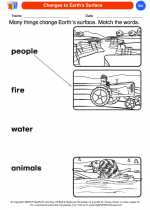 Changes to Earth's Surface
Changes to Earth's Surface  Coloring Worksheet
Coloring Worksheet Changes to Earth's Surface
Changes to Earth's Surface  Coloring Worksheet
Coloring Worksheet Earth's Resources
Earth's Resources  Coloring Worksheet
Coloring Worksheet Earth's Resources
Earth's Resources  Coloring Worksheet
Coloring Worksheet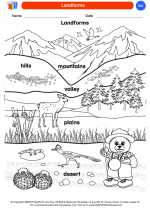 Landforms
Landforms  Coloring Worksheet
Coloring Worksheet Landforms
Landforms  Coloring Worksheet
Coloring Worksheet Our Earth
Our Earth  Coloring Worksheet
Coloring Worksheet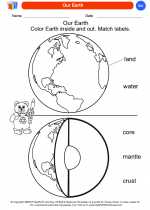 Our Earth
Our Earth  Coloring Worksheet
Coloring Worksheet Reduce-Reuse-Recycle
Reduce-Reuse-Recycle  Coloring Worksheet
Coloring Worksheet Reduce-Reuse-Recycle
Reduce-Reuse-Recycle  Coloring Worksheet
Coloring Worksheet Rocks
Rocks  Coloring Worksheet
Coloring Worksheet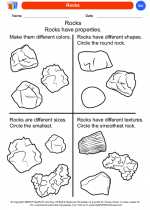 Rocks
Rocks  Coloring Worksheet
Coloring Worksheet Soil Beneath Our Feet
Soil Beneath Our Feet  Coloring Worksheet
Coloring Worksheet Soil Beneath Our Feet
Soil Beneath Our Feet  Coloring Worksheet
Coloring Worksheet Types of Fossils
Types of Fossils  Coloring Worksheet
Coloring Worksheet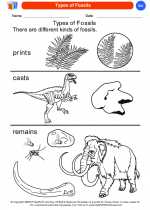 Types of Fossils
Types of Fossils  Coloring Worksheet
Coloring Worksheet Uses of Rocks & Minerals
Uses of Rocks & Minerals  Coloring Worksheet
Coloring Worksheet Uses of Rocks & Minerals
Uses of Rocks & Minerals  Coloring Worksheet
Coloring Worksheet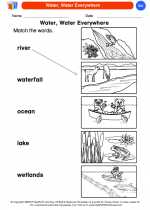 Water, Water Everywhere
Water, Water Everywhere  Coloring Worksheet
Coloring Worksheet Water, Water Everywhere
Water, Water Everywhere 

 Coloring Worksheet
Coloring Worksheet
 Coloring Worksheet
Coloring Worksheet
 Coloring Worksheet
Coloring Worksheet
 Coloring Worksheet
Coloring Worksheet
 Coloring Worksheet
Coloring Worksheet
 Coloring Worksheet
Coloring Worksheet
 Coloring Worksheet
Coloring Worksheet
 Coloring Worksheet
Coloring Worksheet
 Coloring Worksheet
Coloring Worksheet
 Coloring Worksheet
Coloring Worksheet
 Coloring Worksheet
Coloring Worksheet
 Coloring Worksheet
Coloring Worksheet
 Coloring Worksheet
Coloring Worksheet
 Coloring Worksheet
Coloring Worksheet
 Coloring Worksheet
Coloring Worksheet
 Coloring Worksheet
Coloring Worksheet
 Coloring Worksheet
Coloring Worksheet
 Coloring Worksheet
Coloring Worksheet
 Coloring Worksheet
Coloring Worksheet

The resources above cover the following skills:
EARTH AND SPACE SCIENCE (NGSS)
Earth and Human Activity
Students who demonstrate understanding can:
Communicate solutions that will reduce the impact of humans on the land, water, air, and/or other living things in the local environment.